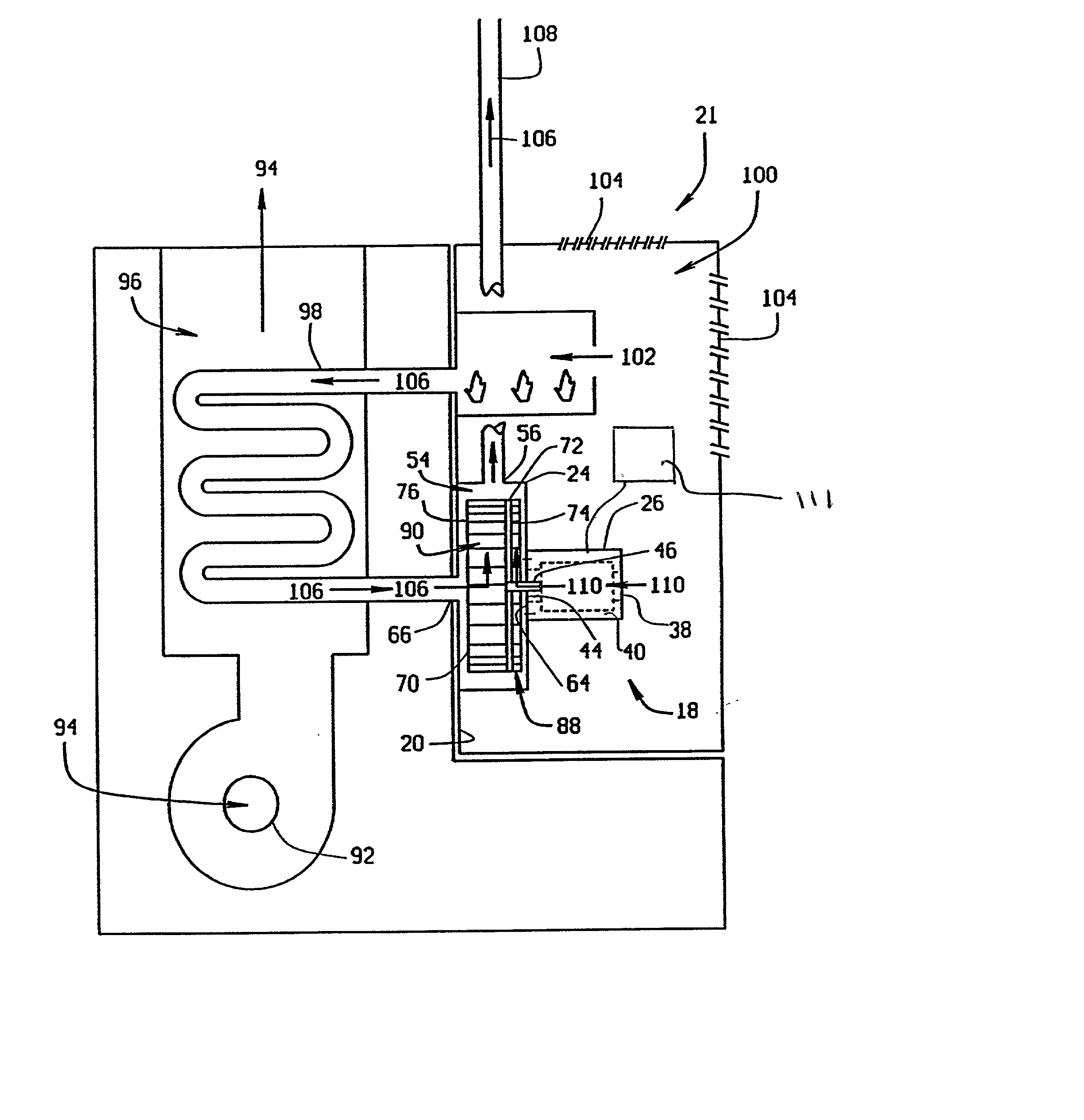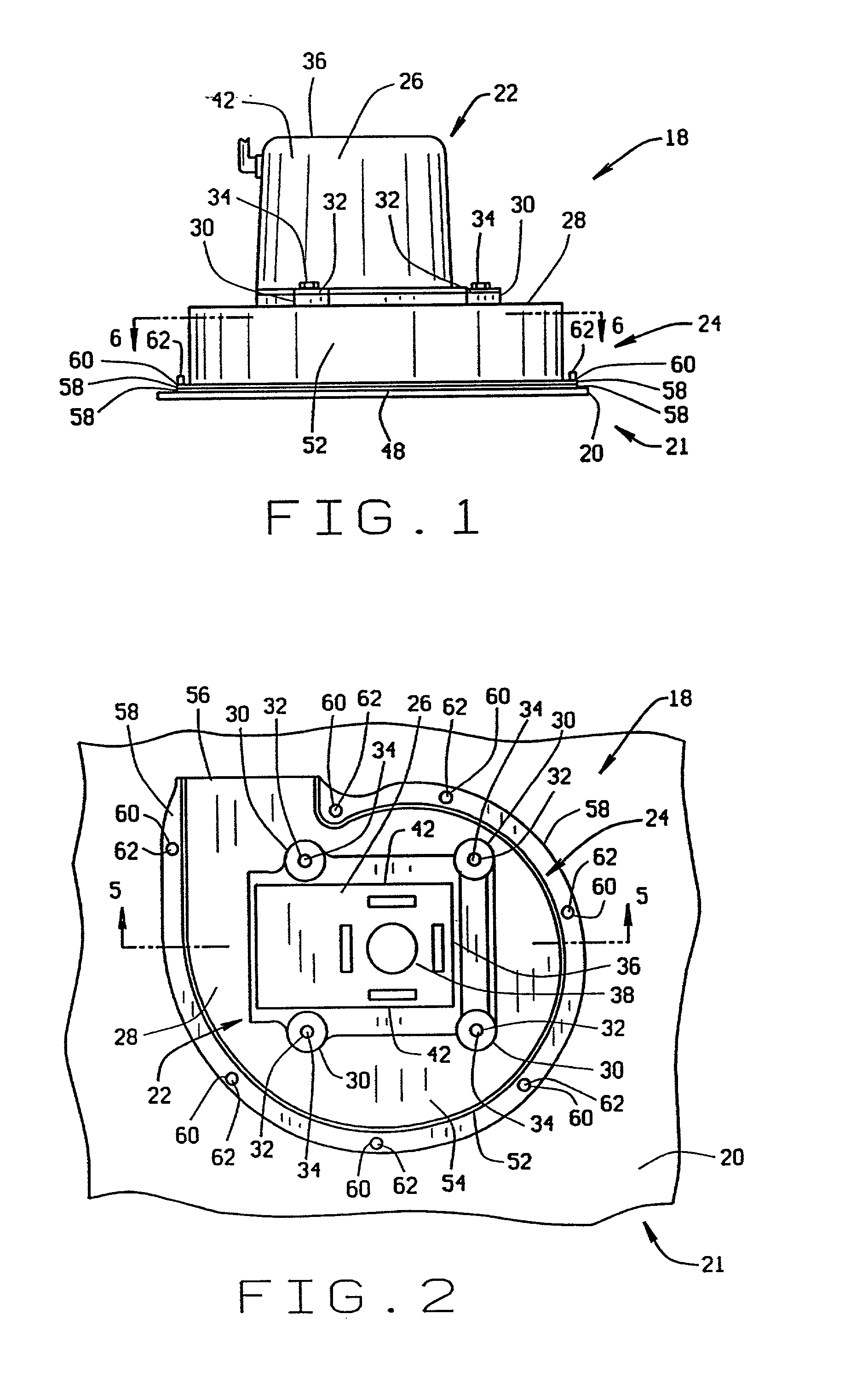Apparatus for and method of operating a furnace blower to evaporate condensate within an exhaust flue
a technology of condensate and furnace, which is applied in the direction of machines/engines, liquid fuel engines, lighting and heating apparatus, etc., can solve the problems of shortening the life of the blower motor, increasing the temperature in the vestibule, and degrading the performance of furnace components located in the vestibule, so as to reduce the noise associated with the blower, reduce the noise, and reduce the cost
- Summary
- Abstract
- Description
- Claims
- Application Information
AI Technical Summary
Benefits of technology
Problems solved by technology
Method used
Image
Examples
Embodiment Construction
[0031] FIGS. 1-6 provide details of the furnace blower 18 of the present invention. The blower 18 is positioned on a blower mounting surface 20 in a furnace 21 and includes a blower motor 22 and a blower housing 24. The blower motor 22 is preferably positioned on top of the blower housing 24 and contained within a motor casing 26. However, the motor 22 and blower housing 24 could have other relative positions. The motor casing 26 is supported on a first side wall 28 of the blower housing 24 by mounting feet 30 extending outward from the motor casing 26. The mounting feet 30 preferably have mounting holes 32, and mechanical fasteners 34 are directed through the mounting holes 32 to secure the motor casing 26 to the first side wall 28 of the blower housing 24.
[0032] As shown in FIG. 2, on a top side 36 of the motor 22 opposite the top, first side wall 28 of the blower housing 24, the motor casing 26 preferably has at least one vent hole 38 through the motor casing 26 that leads into a...
PUM
 Login to View More
Login to View More Abstract
Description
Claims
Application Information
 Login to View More
Login to View More - R&D
- Intellectual Property
- Life Sciences
- Materials
- Tech Scout
- Unparalleled Data Quality
- Higher Quality Content
- 60% Fewer Hallucinations
Browse by: Latest US Patents, China's latest patents, Technical Efficacy Thesaurus, Application Domain, Technology Topic, Popular Technical Reports.
© 2025 PatSnap. All rights reserved.Legal|Privacy policy|Modern Slavery Act Transparency Statement|Sitemap|About US| Contact US: help@patsnap.com



